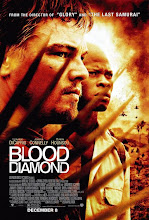In 1998, the NGO, Global Witness, championed the issue of conflict diamonds to the global stage. Global Witness sought to “to break the links between the exploitation of natural resources in conflict and corruption” that they observed in several African conflicts. They also acknowledged that the results of their “investigations” and their “powerful lobbying skills have been not only a catalyst, but a main driver behind most of the major international mechanisms and initiatives that have been established to address these issues.”
Global Witness, as they explain on their website, started out as a very small NGO but grew into an enormous operation:
“Established in 1993 by the three founding directors working from the front rooms of their homes, Global Witness now numbers over forty staff divided between its offices in London and Washington DC, and has built a truly impressive track record of success.”
Their beginnings resemble those of CIVIC, therefore CIVIC will benefit greatly from the presentation of Global Witness’s rise to fame.
Global Witness’s self-proclamation of their successes is confirmed by the fact that major international players adopted conflict diamonds as an issue on the global stage. Under their broad issue of exploitation of resources in conflict zones, they were able to select a specific “issue characterization” that would resonate to other NGOs and other actors. (Keck and Sikkink) The bodily harm and suffering of the victims in conflict diamond mines presents a definitive issue, in which others would be able to connect. CIVIC should consider narrowing their issue to accomplish their broader goal.
Large “gatekeeper” NGOs adopted the conflict diamonds issue as an important cause, the most important being Amnesty International (AI). On their website, AI also acknowledges that they have been extremely instrumental in the global recognition of this issue:
“1998 Global Witness began a campaign to expose the role of diamonds in funding conflicts. As the largest grassroots human rights organization in the world, Amnesty International has been instrumental in educating the public about the problem, and pressing governments and industry to take action.”
AI adopted Global Witness’s cause and helped expand a large network of other NGOs to commit their support to the cause. The inclusion of many different NGOs attributes to the great amount of saliency this issue holds.
After many NGOs adopted the issue, other actors recognized the issue- most importantly the UN and governments. As previously blogged, the UN adopted a resolution in 2000 in regards to the funding of wars with conflict diamonds. Since then The Kimberely Process has been created to implement change. Although it may seem that this issue has reached a level of international norms, Global Witness and others recognize the discrepancies between the policies in place versus the action/change that has occurred:
“Despite the great strides made in the first decade of Global Witness' existence, the struggle to ensure that natural resource exploitation is equitable and sustainable is still in its early stages.”
The Kimberely Process is not working as efficiently as it should be and there is not enough oversight. This is to blame on the diamond industry, the IGOs and governments.
Recognizing these discrepancies, I would place the issue of conflict diamonds in the advocacy/campaign stage because “Practices do not simply echo norms- they make them real.” (Keck and Sikkink, 35). Without properly overseeing the institutions that supposedly regulate the problem, the issue is not yet a global norm because it is not properly implemented.
Subscribe to:
Post Comments (Atom)



1 comment:
Well done Mandy - you have traced the timeline of the campaign and linked it conceptually to the readings and the model from class. I also like how you implicitly compare your issue to the CIVIC campaign - you can draw on these kinds of insights/comments to develop your responses on the CIVIC blog, it's ok if they're redundant.
Post a Comment